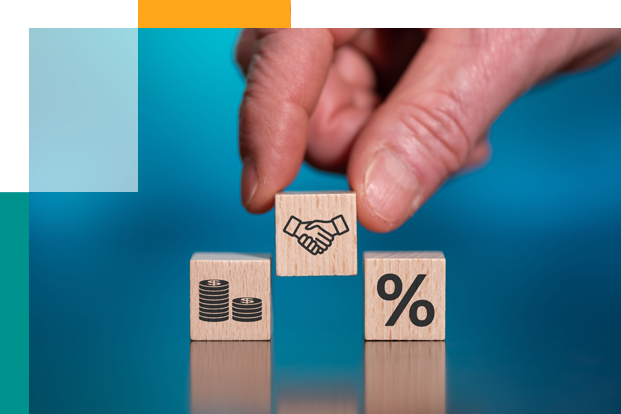Why CRE Lenders Should Care About Sustainable Buildings

As climate change increasingly becomes a cause for concern in our world today, sustainability is becoming a popular topic across many industries. Considering the built world accounts for 40% of carbon dioxide emissions in the U.S., this is especially true for the real estate industry.
Since buildings aren’t disappearing any time soon, professionals in the real estate industry have started to care about sustainable buildings in their portfolios. In this article we take a look at why focusing on sustainable buildings matters from a commercial real estate (CRE) lender’s perspective, including:
- Borrowers care about sustainable buildings
- Legislation is trending towards sustainable buildings
- New opportunities and risks involve sustainable buildings
Borrowers Care About Sustainable Buildings
Carbon footprint. Green loans. ESG goals. Carbon neutral.
These terms and others like them weren’t common a decade or two ago, but have now become vital considerations in the eyes of many borrowers. Since a lender can’t succeed without a borrower to lend to, they are terms worth taking note of.
The facts are in the numbers. According to the Global Sustainable Investment Alliance, at least $30.7 trillion was held in sustainable or “green” investments in 2018. In 2020, a report conducted by EY found that 52% of banks view the environment and climate change as emerging risk factors in the next five years. On top of that, Nareit’s 2021 REIT ESG Report found that 98 of the 100 largest REITs report publicly on their ESG efforts, and 79% of REITs surveyed had a team or committee focused on sustainability efforts.
From these statistics, it’s clear to see that the trend towards sustainable buildings has plenty of money to back it up, which is precisely why CRE lenders should take the time to understand the sustainability goals of their borrowers. As borrowers become experts on the topic of sustainability, so, too, should lenders.
Legislation Is Trending Towards Sustainable Buildings
While most borrowers are increasing their focus on sustainability voluntarily, legislation is trending towards requiring or heavily encouraging sustainable buildings in a number of ways.
The most obvious indication of this trend was the Biden administration’s recent announcement of the American Jobs Plan, a roughly $2.7 trillion infrastructure bill that includes several proposals related to improving sustainability within the real estate sector. The proposed GREEN Act would improve tax incentives for energy-efficient buildings, including increasing the tax deductions for efficient commercial buildings from $1.80 per square foot to $3, and the E-QUIP Act proposes accelerated, 10-year depreciation for building energy investments. While these are still incentives rather than mandates, the proposed legislation makes it clear that the government is going to value sustainability in buildings moving forward.
There are, however, a handful of cities that do have their own mandates for building sustainability. Los Angeles, for example, has made it a goal to reduce the city’s climate pollution by 40% in the next nine years by enhancing green building policies and regulations. Denver has also implemented a Net Zero Energy plan which, among other things, proposes a requirement for buildings to source 100% of their electricity from on-site renewable energy systems.
And, while it may not technically be a legislative body in the traditional sense, it’s worth noting that the Urban Land Institute (ULI) recently set a goal for its members to reduce the carbon emissions of their buildings to net-zero by 2050. With over 45,000 members around the world, this is no small goal.
It remains unclear exactly how sustainability standards will be applied and verified in years to come (the EPA currently recognizes 6 different green building standards), but what is clear is that legislation at the federal and local levels will continue to increasingly prioritize and reward sustainable buildings. For lenders, this is an essential underwriting factor to keep in mind.
New Opportunities and Risks Involve Sustainable Buildings
Aside from the obvious environmental benefits of focusing on sustainable buildings, it’s also good for business. Sustainability is driving innovation in the CRE lending industry in a number of ways.
The most direct impact sustainability is having on the lending industry today is in the introduction of “green financing”. These loans reward green, sustainable buildings by offering better interest rates and other improved loan terms.
Fannie Mae currently offers the most notable commercial green loan through its green financing program. Known as a “green MBS”, the loans are currently limited to multifamily properties that meet certain energy requirements. For commercial properties, BBVA USA launched its Milestone Green commercial real estate loan in 2020 that assists small business owners with closing costs if they purchase an environmentally friendly building.
Although still a relatively new idea, green financing options like these present an interesting opportunity for lenders who are able to become experts in the space. As more green loans begin to hit the market, those lenders will also be able to capitalize on their first-mover advantage.
There are also new risks associated with sustainable buildings that lenders will need to account for moving forward. Not only does climate change itself present a risk from increased flooding and extreme weather events, its impact is also becoming felt in the underwriting process.
Will the project’s value be discounted if it doesn’t have sustainable building systems? What environmental regulations could impact a new development? How do you account for the risk of flooding in your portfolio?
As mentioned previously, borrowers themselves have already begun to account for these questions in their investment decisions. From a lender’s perspective, it is becoming increasingly vital to do the same.
Conclusion
We hope this article gave you a good understanding of why CRE lenders should care about sustainable buildings. Although its impacts on the lending industry have only started being felt recently, all indications point to climate change playing an increasingly large role in real estate decisions moving forward.
At Finance Lobby, we make it easy for lenders to account for these changes in their lending process. You can adjust your lending criteria on the fly to ensure you are always pursuing the best loans for your portfolio, and we give you all the details you need to quickly evaluate deals and get them to closing.
If you’re interested in giving Finance Lobby a try, it takes less than 30 seconds to create your free, personalized profile. You can also continue reading our blog to learn how Finance Lobby is making it faster and easier to find all the deals you want and none of the ones you don’t.


